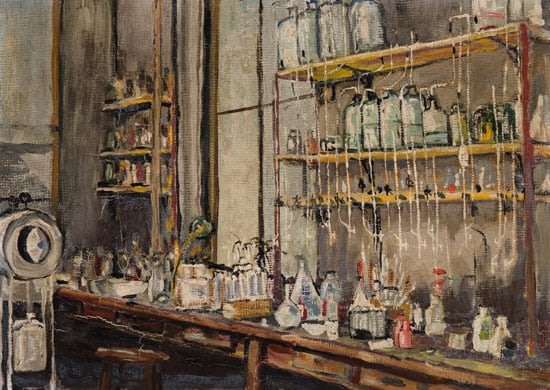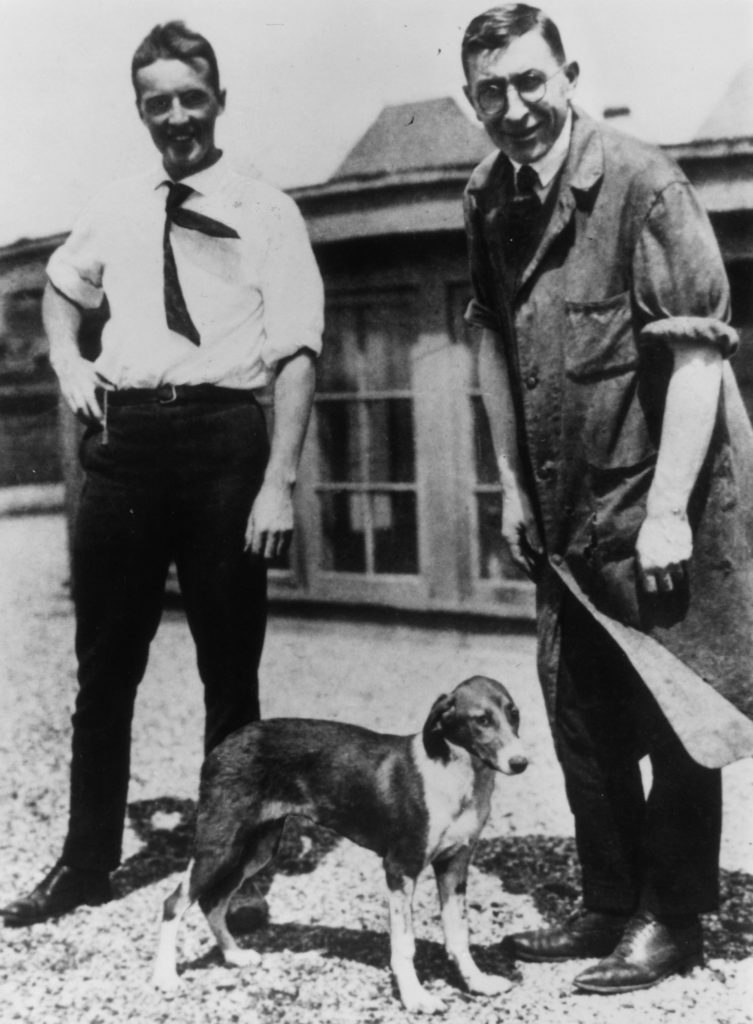Auctions
The Doctor Who Discovered Insulin Was Also an Artist—and His Painting of His Laboratory Just Sold for a Record Price
The Canadian auction house Heffel will donate the buyer’s premium to fund diabetes research.

The Canadian auction house Heffel will donate the buyer’s premium to fund diabetes research.

Naomi Rea

The Canadian doctor who won the Nobel prize for his role in discovering insulin was an accomplished artist as well as a remarkable scientist. Frederick Banting’s 1925 painting of the lab where he did his lifesaving work at the University of Toronto sold yesterday, November 21, at Heffel Fine Art for ten times its estimate after a dramatic saleroom battle.
“Twenty paddles went up at once and you could tell that it was a very passion driven sale,” said David Heffel, the head of the Canadian auction house. When his gavel fell The Lab had sold for $236,862 with premium (or C$313,250). Heffel told artnet News that it was the most complicated lot he had experienced in his career as an auctioneer.
“You could feel the importance of this work, not only as an aesthetically successful painting, but as a historically priceless work by a great artist and medical scientist whose discovery enhanced and extended the lives of millions,” Heffel said.
The winning bid was made over the phone, and a spokesperson for the auction house says it went to “great hands.” In honor of the sale of the historically significant work, Heffel is donating the buyer’s premium (around $46,000) for the lot to the Banting & Best Diabetes Center. In the unit of the Toronto university’s medicine faculty, staff work to advance diabetes research, education and patient care.
“I am lucky that none in my family are diabetic but I must say we have sincere heartfelt admiration for Banting’s discovery,” Heffel said. He added that he was excited the sale could happen during Diabetes Awareness Month. It was Banting’s birthday (and World Diabetes Day) on November 14, the same day Banting and his collaborator Charles Best filed their paper to the University of Toronto’s medical journal.
Diabetes was a killer before Banting’s and Best’s breakthrough discovery in 1921. Banting won the Nobel Prize in Medicine in 1923 along with University of Toronto lecturer John Macleod (although Banting split his award money with Best).

Frederick Banting (right) and Charles Best with one of the first diabetic dogs to receive insulin. Photo by Hulton Archive/Getty Images.
Banting had a lesser known career as an artist. He was friends with the Group of Seven artists Lawren Harris and A.Y. Jackson, and a member of Toronto’s Arts and Letters Club. He mostly painted landscapes but with The Lab Banting united his two great interests. Believed to be his only interior scene, he painted the very room in which he helped discover insulin. Dated February 1925, an inscription on the frame indicates it shows the lab at precisely 2 a.m.
The original owner of the work was another of Banting’s lab assistants, Sadie Gairns. She gave the painting to a fellow lab assistant called Jean Orr, whose descendants consigned the work to the auction.
It has been exhibited once in 1943, a couple of years after Banting’s death, in an exhibition devoted to his work at the University’s Hart House. The sale of The Lab smashes Banting’s auction record. In 2013, Honey Harbour (1933) sold for C$70,200 with premium ($68,992), according to the artnet Price Database.